We had a lot of fun exploring Japan’s many unique cities, but after a while we felt the need to get out and explore some of the beautiful nature that so far we had mostly glimpsed from Shinkansen windows while zipping by at 300 kilometres an hour.
While places like Mount Fuji or Shikoku’s Iya Valley are amazing natural destinations, we also found that we needed a few days to properly explore them. If you don’t have enough time for a longer excursion into nature, you should consider the half-day bike tour through the pretty rice-fields and low-key historical sites of the Kibi Plain.
The area is spread over the former domain of the 4th century Kibi Kingdom, whose remains can still be seen today in the form of gigantic burial mounts rising out of the otherwise flat terrain. We found the tour to be a cool way to get off the beaten path, as we didn’t meet a single other foreigner during our trip.
Read on for everything you need to know about cycling the Kibi Plain.
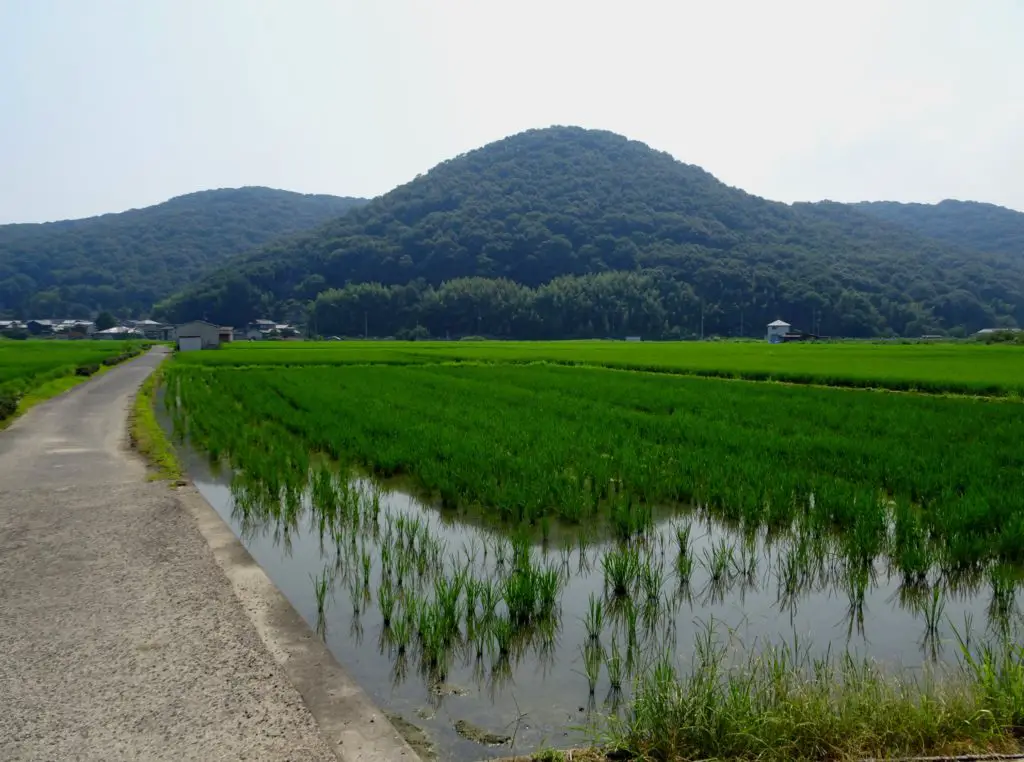
This post may contain affiliate links and I might earn a small commission at no additional cost to you. For more info click here.
How to get to the Kibi Plain
The plain stretches out between Okayama City in the east and Soja in the west and the former is the ideal base of operations. Okayama features plenty hotels and guest houses and the bike tour can easily planned as a half-day trip from here.
The eastern starting point would be Bizen-Ichinomiya Station along the JR Kibi Line, which can be reached in about 10 minutes from Okayama Station (about 200¥). You can also start from the western end of the tour at Soja Station. Trains there on the JR Momotaro Line take about 40 minutes and cost approximately 400¥.
Where to rent and return the bicycles
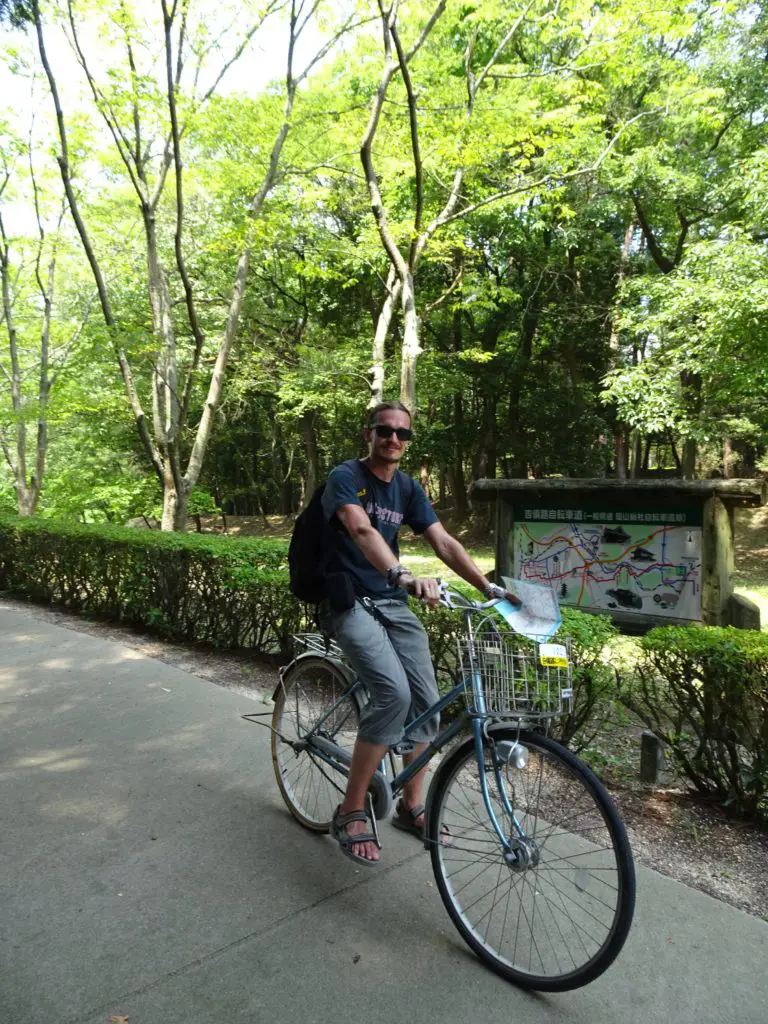

The great part about exploring the Kibi Plain is that the bike rental stores at both ends of the tour have teamed up, so you won’t need to return to your starting point. You can rent a bicycle at Uedo Rent-a-Cycle at Bizen-Ichinomiya JR Station and return it to Araki Rent-a-Cycle near the Soja Train Station.
Both places were open from 9AM to 6PM when we did the tour, although I’d recommend asking them about the closing time to make sure. We paid 1000¥ per bicycle, which gets you the bike for the entire day so you can take as much time as you need, as long as you return it by 6PM.
How long does the tour take?
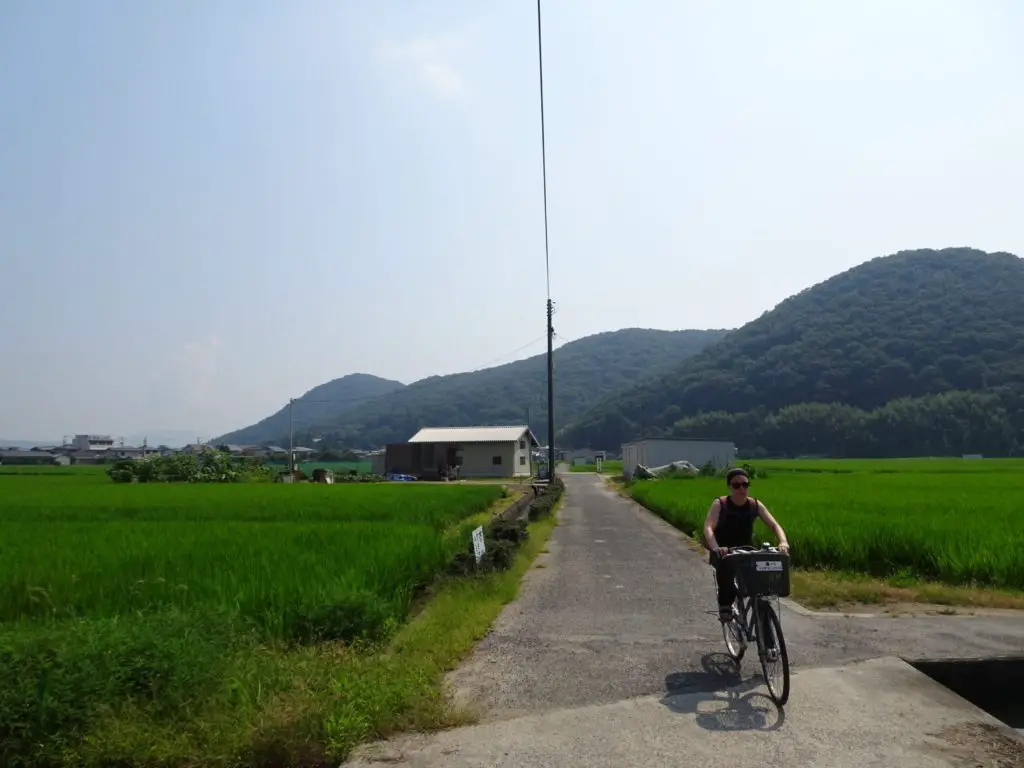
As the distance is only a little over 15km/9mi. you could easily do it in an hour or two. That said, the fun is in the ability to explore the low-key sights along the way, so you might not want to rush. With a few stops and detours along the route, completing the tour took us about three hours.
What to see on the Cycling Tour through the Kibi Plain
As the friendly people at the rental places will give you a map detailing the route and there’s plenty of signage along the way, I won’t get into details about where exactly to direct your wheels. Instead, I’ll tell you a little about some cool places you’ll encounter along the way.
Kibitsuhiko Shinto Shrine
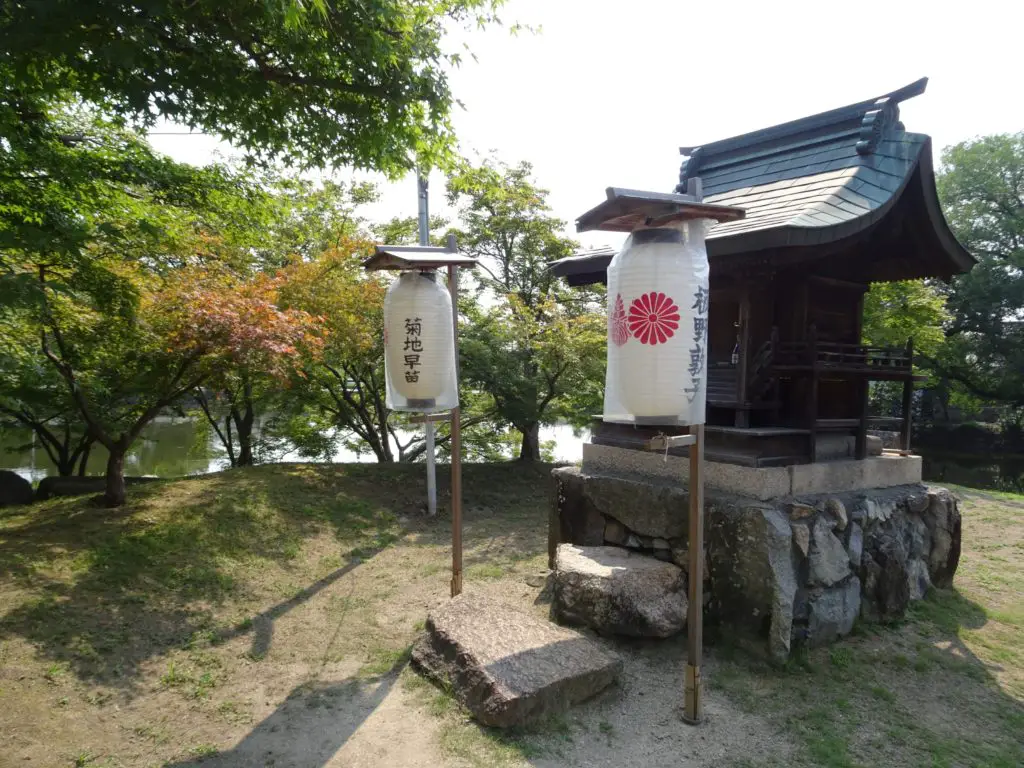
This is the first point of interest you’ll come to as it’s located almost directly south of the Bizen-Ichinomiya Train Station. The most interesting feature of the complex are some small shrines which are located on two tiny islets in a pond teeming with turtles. There are also some impressively carved shrine buildings and a couple of large stone lanterns, rumored to be the biggest in Japan.
Most of the current buildings only date to 1936, because the complex was destroyed in a fire shortly before that date, but the shrine is impressive nonetheless and a fitting introduction to your exploration of the Kibi Plain.
Kibitsu Shinto Shrine
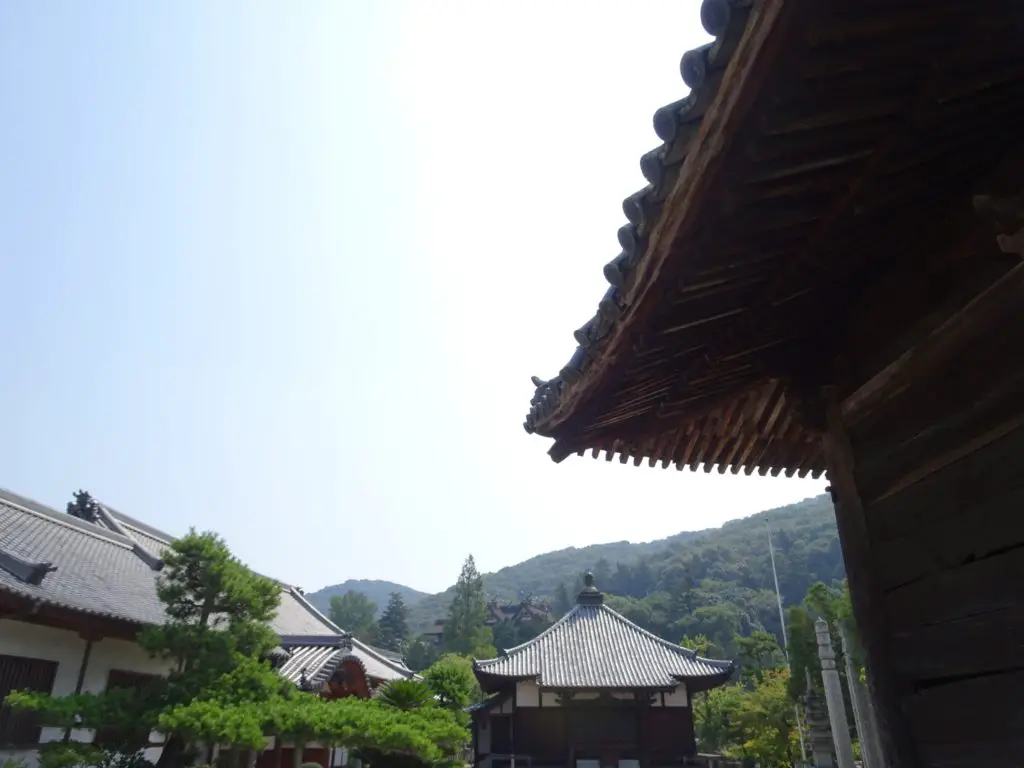
The first part of the cycling tour leads through a pleasant landscape of rice fields and along a small canal. After a while you’ll reach Kibitsu Shrine, the former chief Shinto shrine of Bitchū Province. The Honden dates to the early 15th century and has been declared a National Treasure. When we passed Kibitsu Shrine it was unfortunately closed but we at least got a peek past the gate.
Tatetsuki Burial Mound Ruins
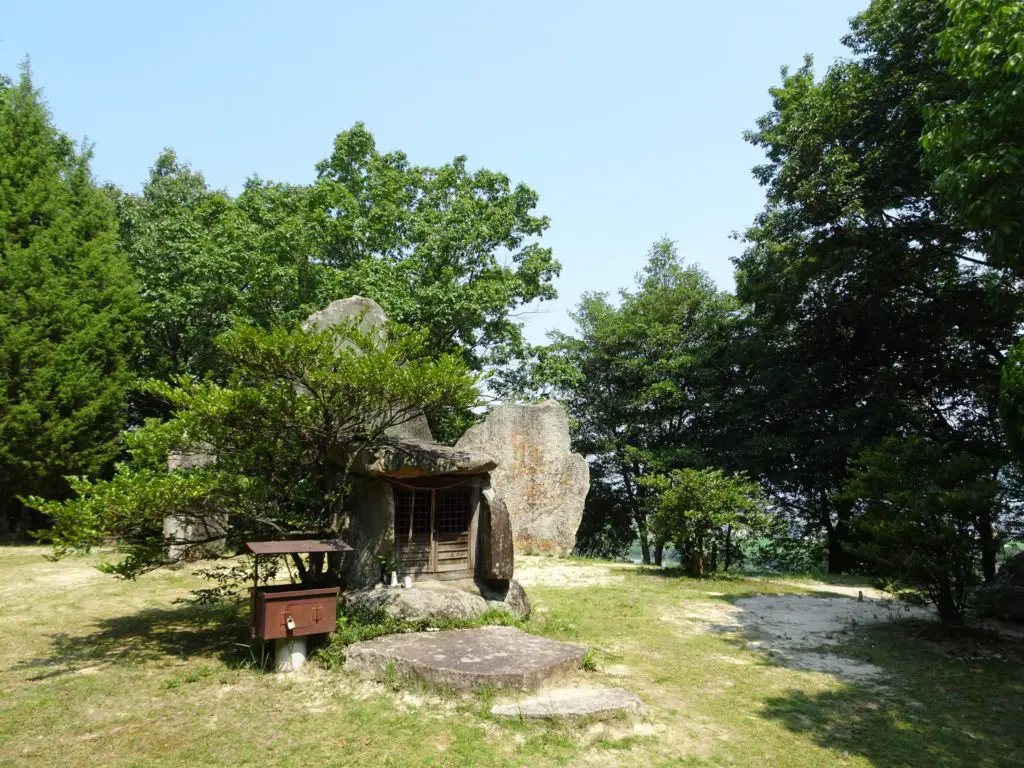
The tour continues through the rice fields – keep your eyes open for egrets who like to search the water for fish and can be spotted all along the tour. After crossing the Ashimori River, you’ll have the chance to take a small detour south to the Tatetsuki Burial Mound.
The mound with a diameter of almost 40m was constructed in the late Yayoi Period in the 2nd century AD. There’s a circle of monoliths and a small shrine on top of the mound as well as a signboard informing you of the history of the place and the archaeological excavations that took place a few years ago.
Tsukuriyama Kofun Burial Mound
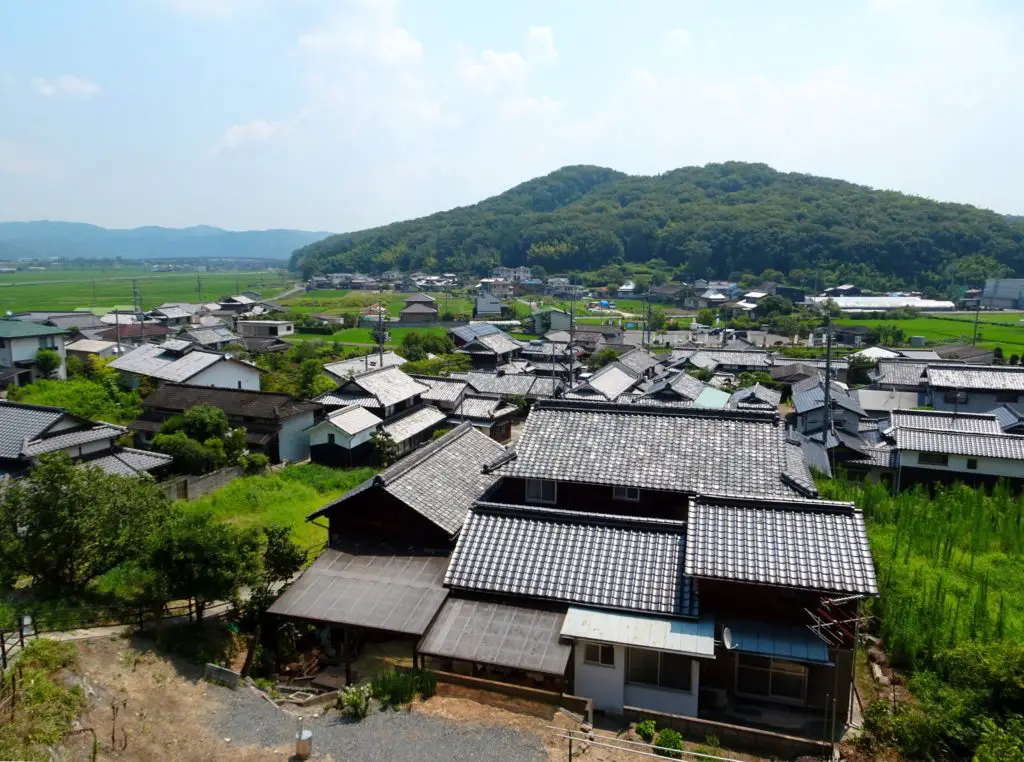
A little further along the route, you’ll come across this even larger burial mound from the Kofun Period (AD 300 to 538). The huge tombs from that era all have a distinct keyhole shape, although it’s hard to discern from the ground.
At a length of 286 meters (or 938 feet), Tsukuriyama Kofun is the fourth-largest of its kind and you can climb to the top from the eastern side for some great views of the surrounding plains. The stone sarcophagus inside the burial chamber is thought to have held the remains of a local king of the Kibi Kingdom.
Bitchū Kokubun-ji Temple
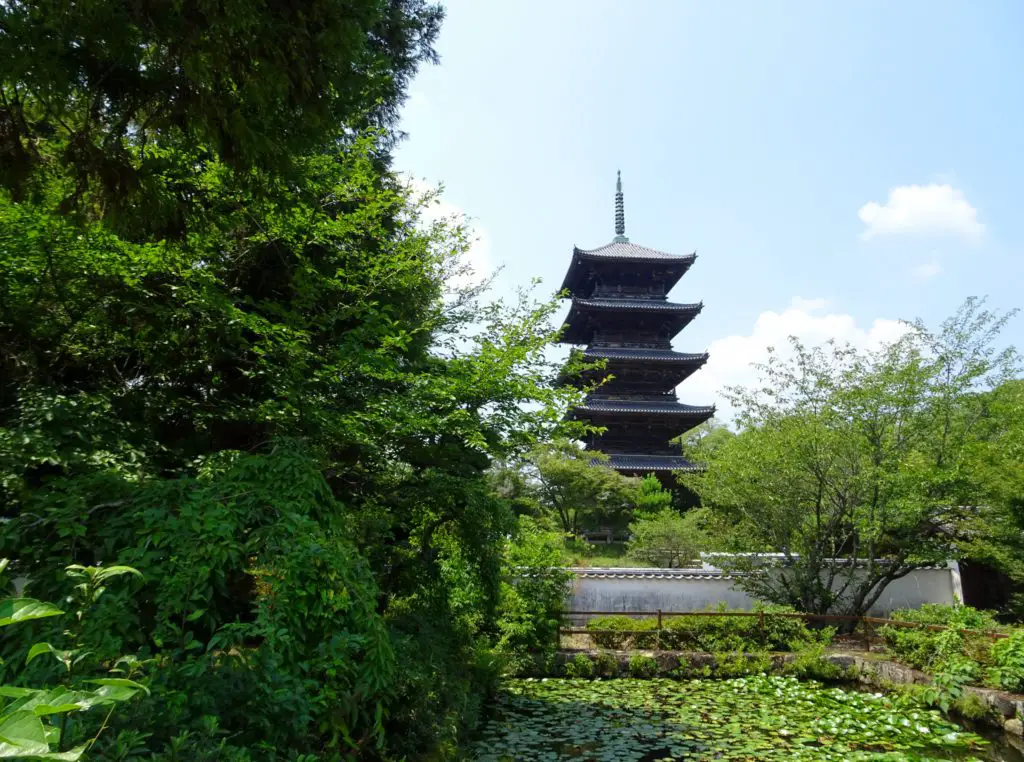
About 15 minutes further along the route, you’ll come across this atmospheric Edo Era temple in the eastern outskirts of Soja City, which features cute wooden shrine buildings and a five-storied pagoda in a pretty little garden.
The beautiful pagoda was built in 1844 and is said to be the last five-storied pagoda to be constructed in Japan to this date. Most of the rest of the tour leads through the small city of Soja, where you can return your bike and board the train back to Okayama.
Map of the Kibi Plain
This map features all the sights mentioned above. Also included are some nearby accommodation options, in case you plan on spending the night in this beautiful rural area of Japan.
Where to go next
Okayama, Capital of the “Land of Sunshine”
Miyajima Island, home to the magnificent Itsukushima Shrine and its Floating Gateway
Naoshima, the quirky Art Island in the Sento Inland Sea
